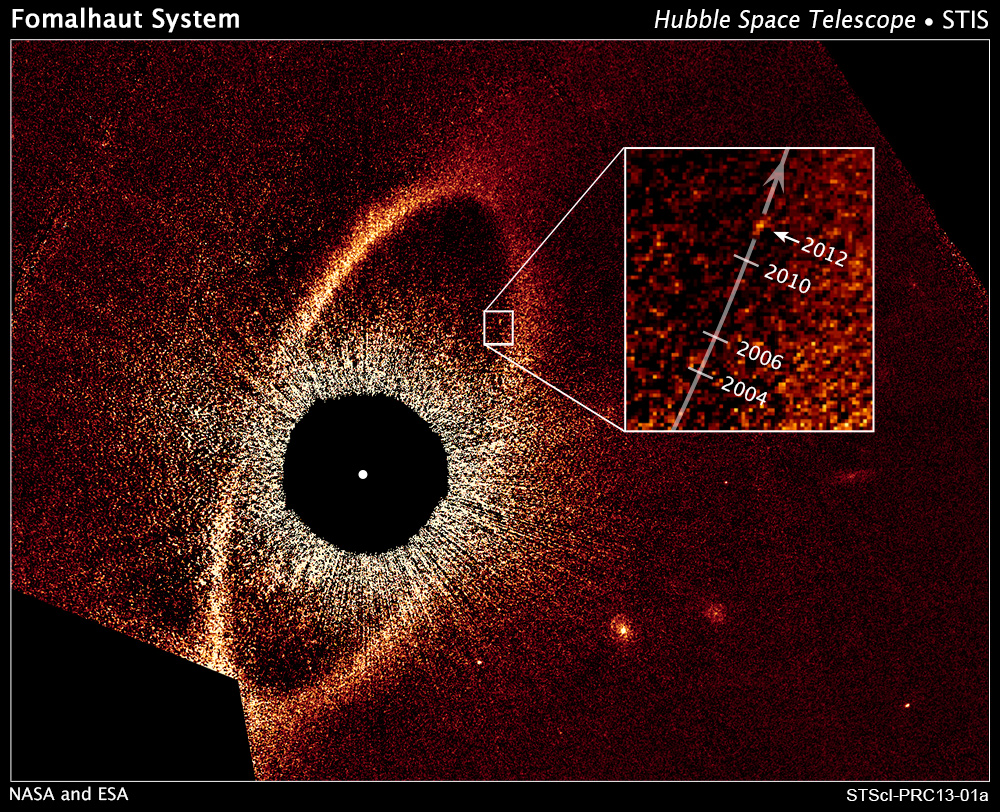 |
| Fomalhaut, imaged in 2009. Image Source |
 |
| Fomalhaut is the brightest star low in the south in fall evenings. Image: Stellarium and Me |
If you find Fomalhaut, you will have also found a planetary system! Fomalhaut is a young star, "only" about 450 million years old, and is surrounded by several debris disks. Just inside the outer disk, a massive planet has been detected. The outer disk has been compared to our Solar System's Kuiper Belt.
 |
| Hubble Space Telescope image showing the planet orbiting Fomalhaut. Image Source |
It is exciting to be able to observe a young star system that is in the early stages of forming planets. Perhaps as our telescopes improve through the years, we will be able to track subtle changes in the protoplanetary disk around this star.
 |
| The debris disk imaged in microwave light by ALMA. The blue part of the image is the above Hubble image, the red part shows the star and debris disk glowing in microwave light. Image Source |
You can always learn the latest news from space at the Dome Planetarium! Follow the us on Facebook or Twitter for daily updates, and come see a show next time you visit the Peoria Riverfront Museum - we teach about space and science everyday.
| I'll be teaching Science is for Girls in November and December - sign up your young scientist today! |


No comments:
Post a Comment